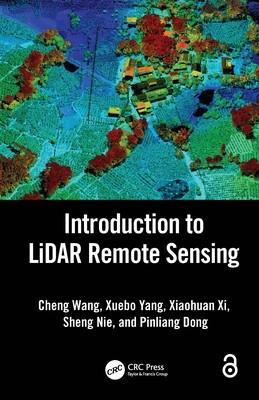
- We will send in 10–14 business days.
- Author: Cheng Wang
- Publisher: CRC Press
- ISBN-10: 1032671505
- ISBN-13: 9781032671505
- Format: 15.6 x 23.4 x 1.6 cm, kieti viršeliai
- Language: English
- SAVE -10% with code: EXTRA
Reviews
Description
Light Detection and Ranging or LiDAR is an advanced active remote sensing technology developed in the last 30 years to measure variable distances to the Earth. This book explains the fundamental concepts of LiDAR technology and its extended spaceborne, airborne, terrestrial, mobile, and UAV platforms. It addresses the challenges of massive LiDAR data intelligent processing, LiDAR software engineering, and in-depth applications. The theory and algorithms are integrated with multiple applications in a systematic way and with step-by-step instructions. Written for undergraduate and graduate students, and practitioners in the field of LiDAR remote sensing, this book is a much-needed comprehensive resource.
Features
- Explains the fundamentals of LiDAR remote sensing including theory, techniques, methods, and applications.
- Highlights the dissemination and popularization of LiDAR remote sensing technology in the last decade.
- Includes new advances in LiDAR data processing and applications.
- Introduces new technologies such as spaceborne LiDAR and photon counting LiDAR.
- Provides multiple LiDAR application cases on power inspection, automatic driving, crop monitoring, indoor navigation, and cultural heritage conservation.
Written for graduate and upper-level undergraduate students taking courses in remote sensing, geography, photogrammetric engineering, laser technique, surveying and mapping, GIS, forestry, and resources and environmental protection. It is also a comprehensive resource for researchers and scientists interested in learning techniques for collecting LiDAR remote sensing data, analyzing, managing, processing, and its applications in forestry, surveying and mapping, cultural relic protection, and digital cities.
EXTRA 10 % discount with code: EXTRA
The promotion ends in 21d.20:05:24
The discount code is valid when purchasing from 10 €. Discounts do not stack.
- Author: Cheng Wang
- Publisher: CRC Press
- ISBN-10: 1032671505
- ISBN-13: 9781032671505
- Format: 15.6 x 23.4 x 1.6 cm, kieti viršeliai
- Language: English English
Light Detection and Ranging or LiDAR is an advanced active remote sensing technology developed in the last 30 years to measure variable distances to the Earth. This book explains the fundamental concepts of LiDAR technology and its extended spaceborne, airborne, terrestrial, mobile, and UAV platforms. It addresses the challenges of massive LiDAR data intelligent processing, LiDAR software engineering, and in-depth applications. The theory and algorithms are integrated with multiple applications in a systematic way and with step-by-step instructions. Written for undergraduate and graduate students, and practitioners in the field of LiDAR remote sensing, this book is a much-needed comprehensive resource.
Features
- Explains the fundamentals of LiDAR remote sensing including theory, techniques, methods, and applications.
- Highlights the dissemination and popularization of LiDAR remote sensing technology in the last decade.
- Includes new advances in LiDAR data processing and applications.
- Introduces new technologies such as spaceborne LiDAR and photon counting LiDAR.
- Provides multiple LiDAR application cases on power inspection, automatic driving, crop monitoring, indoor navigation, and cultural heritage conservation.
Written for graduate and upper-level undergraduate students taking courses in remote sensing, geography, photogrammetric engineering, laser technique, surveying and mapping, GIS, forestry, and resources and environmental protection. It is also a comprehensive resource for researchers and scientists interested in learning techniques for collecting LiDAR remote sensing data, analyzing, managing, processing, and its applications in forestry, surveying and mapping, cultural relic protection, and digital cities.


Reviews